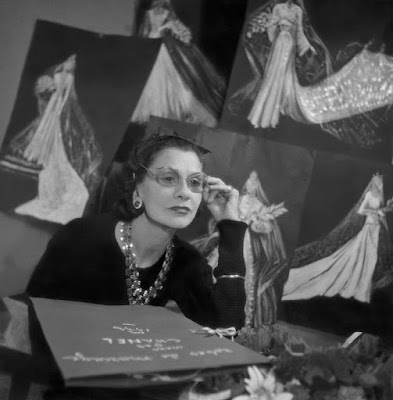From February 26 to March 5, 2024, Paris is once again the epicenter of an exciting array of runway events and presentations for its Fashion Week, showcasing the latest women's ready-to-wear collections for the upcoming Autumn-Winter 2024-2025 season.
 |
| In spite of the rain, Paris remains an enchanting destination for both tourists and the worldwide fashion community. Photo by Lucia Carpio. |
Despite the forecasted rain showers during these few days, the unpredictable weather won't dampen Paris' allure as it captivates the attention of the global fashion community. The city is set to attract celebrities, international buyers, journalists, and influencers, reinforcing its status as a beacon of style.
 |
| A shop in the Carousel de Louvre, Paris, selling Paris 2024 Summer Olympics momentos and keepsakes. Photo by Lucia Carpio |
Speaking of Parisian fashion, Chanel, one of France's most revered design houses, will stage its fashion show on March 5th 2024 as one of the main events to close Paris Fashion Week.
Chanel's illustrious founder, Gabrielle Chanel (1883 – 1971), affectionately known as Coco, is hailed as one of the most successful "couturière" of the 20th century. Currently showcased at London's prestigious Victoria & Albert Museum (V&A) is the sell-out exhibition "Gabrielle Chanel: Fashion Manifesto," running since September 2023, and now concluding on March 10th, 2024 (after an extension from the original closing date of February 24th).
 |
| Gabrielle (Coco) Chanel, photographed by Roger Schall for Vogue, May 1938. Photograph: Condé Nast/ Shutterstock, courtesy of Victoria & Albert Museum, London, UK |
Gabrielle (Coco) Chanel, was a pioneering fashion designer whose innovative concepts revolutionized the fashion industry in the early 20th century. Her design philosophy was grounded in simplicity, comfort, and functionality, deviating from the elaborate and restrictive fashion trends of her time.
 |
| Chanel's tweed suits are iconic, featuring boxy jackets with contrasting trim and slim skirts, providing a chic and modern alternative to traditional women's attire. Photo by Lucia Carpio |
The key concepts of her designs are timeless elegance (she believed in creating pieces that could withstand changing trends and remain relevant over time), comfort and functionality (she challenged the prevailing corseted and constrictive styles by promoting garments that allowed freedom of movement), and innovative use of fabrics (especially jersey, which was unconventional in high fashion at the time; she transformed this humble material into luxurious and comfortable garments.)
Her strengths also lay in her keen business sense, establishing herself as a successful entrepreneur. She launched the iconic Chanel No. 5 perfume and expanded her brand into various product lines, contributing to her lasting legacy.
 |
| The Chanel quilted handbag design with chain strap, and signature double-C logo. Photo by Lucia Carpio |
She pioneered the art of branding. The interlocking C's of the Chanel logo became synonymous with luxury and sophistication. Chanel's branding was influential in creating a distinctive identity for her fashion house. The Chanel 2.55 handbag, introduced in 1955, became a classic with its quilted design, chain strap, and signature double-C logo.
Chanel popularized the concept of the Little Black Dress, a versatile and timeless garment that became a wardrobe staple for women.
Her tweed suits were revolutionary. These iconic suits featured boxy jackets with contrasting trim and slim skirts, providing a chic and modern alternative to traditional women's attire. Look closely and you see the intricate details of hand-craftsmanship, the epitome of haute couture.
Additionally, Chanel drew inspiration from British menswear, incorporating elements such as tweed fabrics and collarless jackets into her designs. Her connections with the British aristocracy, including the Duke of Westminster, also influenced her work.
 |
| Chanel had said, no outfit is complete without jewellery, and hers carry her signature for timeless elegance, innovation, and incorporation of distinctive design elements. Photo by Lucia Carpio |
In summary, Gabrielle Chanel's fashion design concept emphasized timeless elegance, comfort, and functionality. Her strengths included business acumen and iconic branding, and her signature looks, such as the Little Black Dress and tweed suits, continue to influence fashion today. Despite being a French designer, her close relationship with London and association with Great Britain played a role in expanding her brand globally.
Photos by Lucia Carpio at the "Gabrielle Chanel: Fashion Manifesto," closing on March 10th, 2024 at London's Victoria & Albert Museum.










No comments:
Post a Comment